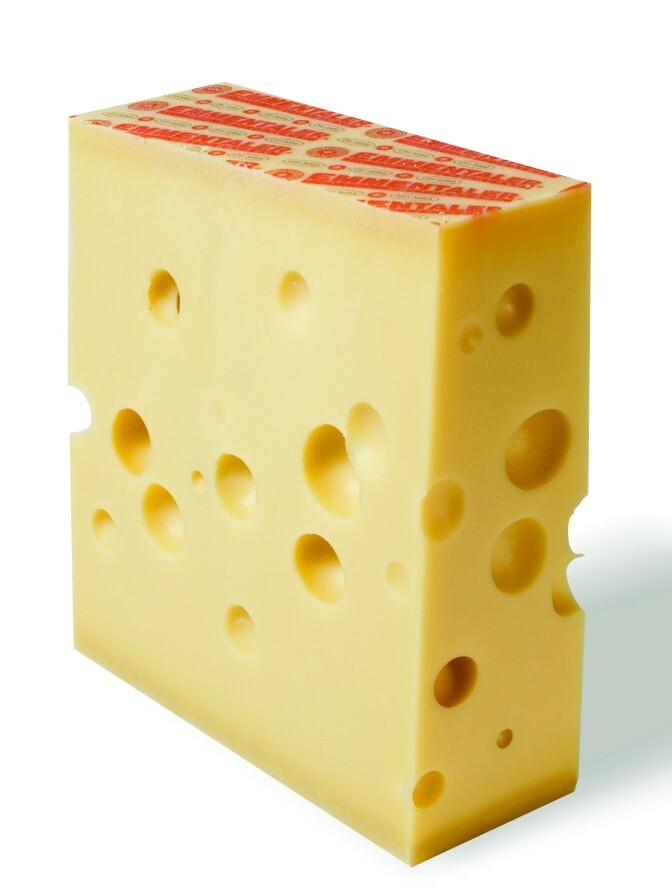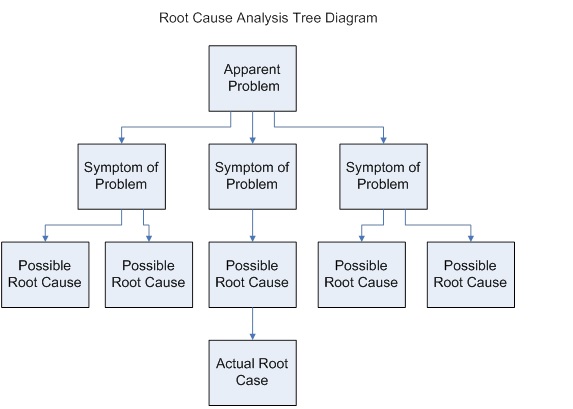|
Tripod Beta
Tripod Beta is an incident and accident analysis methodology made available by the Stichting Tripod Foundation via the Energy Institute. The methodology is designed to help an accident investigator analyse the causes of an incident or accident in conjunction with conducting the investigation. This helps direct the investigation as the investigator will be able to see where more information is needed about what happened, or how or why the incident occurred. Early development Tripod Beta was developed by Shell International Exploration and Production B.V. as the result of Shell-funded academic research in the 1980s and 1990s. Such research contributed towards the development of the Swiss cheese model of accident causation, and in the late 1990s and early 2000s, towards the development of thHearts and Mindssafety culture toolkit. The research was based on the following hypotheses #Accidents happen because controls fail (now known as the Swiss Cheese model) #The underlying ca ... [...More Info...] [...Related Items...] OR: [Wikipedia] [Google] [Baidu] |
Energy Institute
The Energy Institute (EI) is a professional organization for engineers and other professionals in energy related fields. The EI was formed in 2003 with the merger of the Institute of Petroleum (dating back to 1913) and the Institute of Energy (dating back to 1925). It has an international membership of about 20,000 people and 200 companies. Its main office is at 61 New Cavendish Street, London, England. EI is a registered charity with a Royal Charter. In the United Kingdom, EI has the authority to establish professional registration for the titles of Chartered Engineer, Incorporated Engineer, and Engineering Technician, as a licensed member institution of the Engineering Council. It is also licensed by the Society for the Environment to award Chartered Environmentalist status. Formation In 2003 the Institute of Petroleum and the Institute of Energy merged to form the Energy Institute. The offices of the Institute of Petroleum became the offices of the combined organization, and ... [...More Info...] [...Related Items...] OR: [Wikipedia] [Google] [Baidu] |
Swiss Cheese Model
The Swiss cheese model of accident causation is a model used in risk analysis and risk management, including aviation safety, engineering, healthcare, emergency service organizations, and as the principle behind layered security, as used in computer security and defense in depth. It likens human systems to multiple slices of Swiss cheese, stacked side by side, in which the risk of a threat becoming a reality is mitigated by the differing layers and types of defenses which are "layered" behind each other. Therefore, in theory, lapses and weaknesses in one defense do not allow a risk to materialize, since other defenses also exist, to prevent a single point of failure. The model was originally formally propounded by James T. Reason of the University of Manchester, and has since gained widespread acceptance. It is sometimes called the "cumulative act effect". Although the Swiss cheese model is respected and considered to be a useful method of relating concepts, it has been subj ... [...More Info...] [...Related Items...] OR: [Wikipedia] [Google] [Baidu] |
Tripod Delta
A tripod is a portable three-legged frame or stand, used as a platform for supporting the weight and maintaining the stability of some other object. The three-legged (triangular stance) design provides good stability against gravitational loads as well as horizontal shear forces, and better leverage for resisting tipping over due to lateral forces can be achieved by spreading the legs away from the vertical centre. Variations with one, two, and four legs are termed ''monopod'', ''bipod'', and ''quadripod'' (similar to a table). Etymology First attested in English in the early 17th century, the word ''tripod'' comes via Latin ''tripodis'' (GEN of ''tripus''), which is the romanization of Greek (''tripous''), "three-footed" (GEN , ''tripodos''), ultimately from (''tri-''), "three times" (from , ''tria'', "three") + (''pous''), "foot". The earliest attested form of the word is the Mycenaean Greek , ''ti-ri-po'', written in Linear B syllabic script. Cultural use Many cult ... [...More Info...] [...Related Items...] OR: [Wikipedia] [Google] [Baidu] |
Piper Alpha
Piper Alpha was an oil platform located in the North Sea approximately north-east of Aberdeen, Scotland. It was operated by Occidental Petroleum (Caledonia) Limited (OPCAL) and began production in 1976, initially as an oil-only platform but later converted to add gas production. Piper Alpha exploded and sank on 6 July 1988, killing 165 of the men on board, 30 of whose bodies were never recovered, as well as a further two rescue workers after their rescue vessel, which had been trapped in debris and immobilized, was destroyed by the disintegrating rig. Sixty-one workers escaped and survived. The total insured loss was about £1.7 billion (£ billion in ), making it one of the costliest man-made catastrophes ever. At the time of the disaster, the platform accounted for approximately 10% of North Sea oil and gas production. The accident is the world's worst offshore oil disaster in terms of lives lost and industry impact. The Inquiry blamed it on inadequate maintenance and safe ... [...More Info...] [...Related Items...] OR: [Wikipedia] [Google] [Baidu] |
Bow Tie Methodology
Bow often refers to: * Bow and arrow, a weapon * Bowing, bending the upper body as a social gesture * An ornamental knot made of ribbon Bow may also refer to: * Bow (watercraft), the foremost part of a ship or boat * Bow (position), the rower seated in the bow of a racing shell Knots * Bow knot, a shoelace knot or a rosette * Bow tie, a type of necktie * Pussy bow, a style of neckwear Music * Bow (music), used to play a stringed instrument * Musical bow, a musical instrument resembling an archer's bow * EBow, electronic device for playing the electric guitar * Bows (band), a band from the UK Porcelain * Bow porcelain factory Places England * Bow, Devon, a village in mid Devon * Bow, a hamlet in the parish of Ashprington in South Devon * Bow, London, a district * Bow, Oxfordshire, a hamlet United States * Bow, Kentucky * Bow, New Hampshire * Bow, Washington Canada * The Bow (skyscraper), Calgary, Alberta * Bow River, Alberta Other * Bow (name), including a list of people wi ... [...More Info...] [...Related Items...] OR: [Wikipedia] [Google] [Baidu] |
Swiss Cheese Model
The Swiss cheese model of accident causation is a model used in risk analysis and risk management, including aviation safety, engineering, healthcare, emergency service organizations, and as the principle behind layered security, as used in computer security and defense in depth. It likens human systems to multiple slices of Swiss cheese, stacked side by side, in which the risk of a threat becoming a reality is mitigated by the differing layers and types of defenses which are "layered" behind each other. Therefore, in theory, lapses and weaknesses in one defense do not allow a risk to materialize, since other defenses also exist, to prevent a single point of failure. The model was originally formally propounded by James T. Reason of the University of Manchester, and has since gained widespread acceptance. It is sometimes called the "cumulative act effect". Although the Swiss cheese model is respected and considered to be a useful method of relating concepts, it has been subj ... [...More Info...] [...Related Items...] OR: [Wikipedia] [Google] [Baidu] |
Annex 8 Figure 12
{{disambiguat ...
Annex or Annexe refers to a building joined to or associated with a main building, providing additional space or accommodations. It may also refer to: Places * The Annex, a neighbourhood in downtown Toronto, Ontario, Canada * The Annex (New Haven), a neighborhood of New Haven, Connecticut, United States * Annex, Oregon, a census-designated place in the United States Other uses * Annex (comics), a Marvel Comics character * Addendum or appendix at the end of a document * The Annex, Grand Cayman, a football ground in George Town, Cayman Islands * "Annex", B-side of the 1980 Orchestral Manoeuvres in the Dark single "Enola Gay" * Annex, an early name for the Bangkok Adventist Hospital See also * Annexation Annexation (Latin ''ad'', to, and ''nexus'', joining), in international law, is the forcible acquisition of one state's territory by another state, usually following military occupation of the territory. It is generally held to be an illegal act ... [...More Info...] [...Related Items...] OR: [Wikipedia] [Google] [Baidu] |
Human Error
Human error refers to something having been done that was "unintended consequences, not intended by the actor; not desired by a set of rules or an external observer; or that led the task or system outside its acceptable limits".Senders, J.W. and Moray, N.P. (1991) Human Error: Cause, Prediction, and Reduction'. Lawrence Erlbaum Associates, p.25. . Human error has been cited as a primary cause contributing factor in disasters and accidents in industries as diverse as nuclear power (e.g., the Three Mile Island accident), aviation (see pilot error), space exploration (e.g., the Space Shuttle Challenger disaster and Space Shuttle Columbia disaster), and medicine (see medical error). Prevention of human error is generally seen as a major contributor to Data integrity, reliability and safety of (complex) systems. Human error is one of the many contributing causes of risk events. Definition Human error refers to something having been done that was "not intended by the actor; not desired b ... [...More Info...] [...Related Items...] OR: [Wikipedia] [Google] [Baidu] |
Root Cause Analysis
In science and engineering, root cause analysis (RCA) is a method of problem solving used for identifying the root causes of faults or problems. It is widely used in IT operations, manufacturing, telecommunications, industrial process control, accident analysis (e.g., in aviation, rail transport, or nuclear plants), medicine (for medical diagnosis), healthcare industry (e.g., for epidemiology), etc. Root cause analysis is a form of deductive inference since it requires an understanding of the underlying causal mechanisms of the potential root causes and the problem. RCA can be decomposed into four steps: * Identify and describe the problem clearly * Establish a timeline from the normal situation until the problem occurs * Distinguish between the root cause and other causal factors (e.g., using event correlation) * Establish a causal graph between the root cause and the problem RCA generally serves as input to a remediation process whereby corrective actions are taken to pr ... [...More Info...] [...Related Items...] OR: [Wikipedia] [Google] [Baidu] |
Hazard Analysis
A hazard analysis is used as the first step in a process used to assess risk. The result of a hazard analysis is the identification of different types of hazards. A hazard is a potential condition and exists or not (probability is 1 or 0). It may, in single existence or in combination with other hazards (sometimes called events) and conditions, become an actual Functional Failure or Accident (Mishap). The way this exactly happens in one particular sequence is called a scenario. This scenario has a probability (between 1 and 0) of occurrence. Often a system has many potential failure scenarios. It also is assigned a classification, based on the worst case severity of the end condition. Risk is the combination of probability and severity. Preliminary risk levels can be provided in the hazard analysis. The validation, more precise prediction (verification) and acceptance of risk is determined in the risk assessment (analysis). The main goal of both is to provide the best selection of m ... [...More Info...] [...Related Items...] OR: [Wikipedia] [Google] [Baidu] |



